Business
Cut corporate income taxes massively to increase growth, prosperity
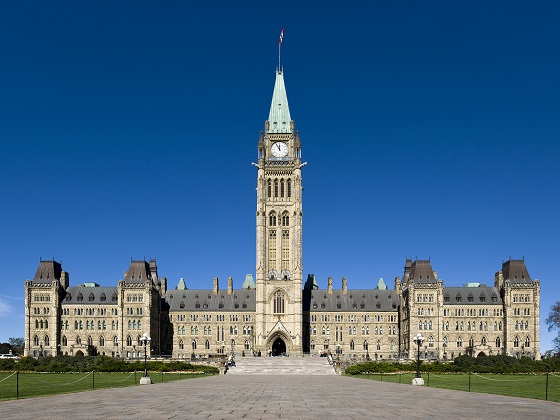
From the Frontier Centre for Public Policy
By Ian Madsen
Business groups are justifiably opposed to the federal government’s June 25 increase of the inclusion rate for capital gains tax. But there is another corporate income tax increase looming. It will come in the form of a 2018 corporate tax reduction that is set to expire starting this year. Ottawa ironically intended it to make Canada more competitive amid the 2018 tax reform and cut in the United States.
According to a study by Trevor Tombe at the University of Calgary’s School of Public Policy, Canada’s corporate income tax rate on new investments will jump from 13.7 percent to 17 percent by 2027. Even worse, for Canada’s high-value-added manufacturing sector, taxation will triple. Higher corporate income taxes, in a nation experiencing difficulties in encouraging domestic or foreign investment in new plant equipment, will struggle to reverse meagre productivity growth—a problem noted by the Bank of Canada.
Heavier taxation will hinder future improvement in incomes and the standard of living, making it a serious issue. Increasing income tax on businesses and investment will not increase prosperity and personal income. The legislation to make the 2018 provisions permanent is, alarmingly, not urgent to politicians.
At least one policy could make Canada more attractive to business, investors, and hard-pressed ordinary citizens. It would be to slash corporate income taxes substantially. Another is to make paying taxes easier, as Magna Corporation founder Frank Stronach suggested. It may surprise some Canadians, but Ottawa’s take from corporate income taxes is a relatively small. However, it is a fast-rising proportion of federal overall revenue: 21 percent in fiscal 2022–23, according to the government, up from 13 percent in fiscal 2000–21, notes the OECD.
Letting companies pay taxes and reducing the tax burden on ordinary people might seem OK to some. However, what happens is that every corporate expense, including taxes, reduces cash flow that reaches individuals. The money remaining in the hands of businesses could either be reinvested or paid out as dividends to owners. Let’s remember that owners are founding families, pension fund beneficiaries (employees, citizens), and ordinary individuals.
As there are fewer available funds, there will be a reduced capacity for capital investment. Investment is required to replace existing equipment, or add new equipment, devices, software, and vehicles for businesses. It only keeps companies competitive and makes employees more productive. This, in turn, makes the whole economy more profitable, thereby increasing taxes paid to governments.
As for the questionable reason for the tax increase, aiming to generate more revenue, recent experience in the United States is informative. The 2017 Tax Cut and Jobs Act reduced corporate income tax from 39 percent of pre-tax income to 21 percent. It resulted in U.S. federal corporate income tax revenue rising 25 percent from 2017 to 2021. Capital investment rose dramatically too, by 20 percent, a key goal of many Canadian policymakers.
Until recently, the Republic of Ireland had a corporate income tax rate of 12.5 percent, a key selling point in its successful efforts to attract foreign investment over the past several decades. Ireland, with few natural resources, is one of the richest and fastest-growing of the OECD nations, despite a bad real estate crash 15 years ago. Near the lowest in the OECD in tax burden, it nevertheless has a high quality of life and services.
If anything, Canada should cut corporate income taxes to below the levels of its main trading partners and rivals. To do so, it will have to extricate itself from the ill-conceived international treaty that compels signatory nations and territories to have a floor rate of at least 15 percent of pre-tax income. Ottawa seems enamoured of multinational agreements and organizations, so it may be highly reluctant to abrogate membership in this growth-dampening arrangement. The statutory federal corporate income tax rate in Canada is 15 percent, but all provincial governments impose their own levies on top of that, ranging from 8 percent in Alberta to 16 percent in Prince Edward Island.
By cutting taxes, we can pave the way for a brighter economic future, marked by increased productivity and the prosperity we all yearn for. This move will also ensure our international competitiveness, a goal we are currently struggling to achieve with our current 25 percent rate (OECD). Canada has a hard time attracting investors. Raising taxes will neither attract more of them nor encourage more investment from existing Canada-domiciled entrepreneurs and companies.
Ian Madsen is senior policy analyst at the Frontier Centre for Public Policy.
Business
Liberal’s green spending putting Canada on a road to ruin
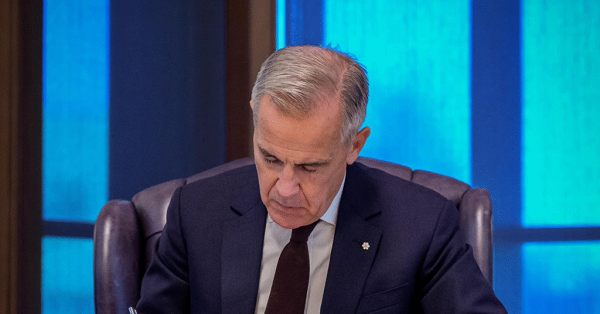
Once upon a time, Canadians were known for our prudence and good sense to such an extent that even our Liberal Party wore the mantle of fiscal responsibility.
Whatever else you might want to say about the party in the era of Jean Chrétien and Paul Martin, it recognized the country’s dire financial situation — back when The Wall Street Journal was referring to Canada as “an honorary member of the Third World” — as a national crisis.
And we (remember, I proudly served as Member of Parliament in that party for 18 years) made many hard decisions with an eye towards cutting spending, paying down the debt, and getting the country back on its feet.
Thankfully we succeeded.
Unfortunately, since then the party has been hijacked by a group of reckless leftwing fanatics — Justin Trudeau and his lackeys — who have spent the past several years feeding what we built into the woodchipper.
Mark Carney’s finally released budget is the perfect illustration of that.
The budget is a 400 page monument to deficit delusion that raises spending to $644.4 billion over five years — including $141.4 billion in new spending — while revenues limp to $583.3 billion, yielding a record (non-pandemic) $78.3 billion shortfall, an increase of 116% from last year.
This isn’t policy; it’s plunder. Interest payments alone devour $55.6 billion this year, projected to hit $76.1 billion by 2029-30 — more than the entire defence budget and rising faster than healthcare transfers.
We can’t discount the possibility that this will lead to a downgrade of our credit rating, which will significantly increase the cost of borrowing and of doing business more generally.
Numbers this big start to feel very abstract. But think of it this way: that is your money they’re spending. Ottawa’s wealth is made up entirely of our tax dollars. We’ve entrusted that money to them with the understanding that they will use it responsibly. In the decade these Liberals have been in power, they have betrayed that trust.
They’ve pursued policies which have made life in Canada increasingly unaffordable. For example, at the time of writing it takes 141 Canadian pennies (up from 139 a few days ago) to buy one U.S. dollar, in which all of our commodities are priced. Well, that’s .25 cents per litre of gasoline. Imagine what that’s going to do to the price of heating, of groceries, of the various other commodities which we consume.
And this budget demonstrates that the Carney era will be more of the same.
Of course, the Elbows Up crowd are saying the opposite — that this shows how fiscally responsible Mark Carney is, unlike his predecessor. (Never mind that they also publicly supported everything that Trudeau did when he was in government.) They claim that Carney shows that he’s more open to oil and gas than Trudeau was.
Don’t believe it.
The oil and gas sector does get a half-hearted nod in the budget with, for instance, a conditional pathway to repeal the emissions cap. But those conditions are important. Repeal is tied to the effectiveness of Carney’s beloved industrial carbon tax. If that newly super-charged carbon tax, which continues to make our lives more expensive, leads to government-set emissions reductions benchmarks being met, then Ottawa might — might — scrap the emissions.
Meanwhile, the budget doubles down on the Trudeau government’s methane emissions regulations. It merely loosens the provisions of the outrageous Bill C-59, an act which should have been scrapped in its entirety. And it leaves in place the Trudeaupian “green” super structure, which has resource sector investment, and any business that can manage it, fleeing to the U.S.
In these perilous times, with Canada teetering on the brink of recession, a responsible government would be cutting spending and getting out of the way of our most productive sectors, especially oil and gas — the backbone of our economy.
It would be repealing the BC tanker ban and Bill C-69, the “no more pipelines act,” so that our natural resources could better generate revenue on the international market and bring down energy rates at home.
It would quit wasting millions on Electric Vehicle charging stations; mandating that all Canadians buy EVs, even with their elevated cost; and pressuring automakers to manufacture Electric Vehicles, regardless of demand, and even as they keep closing up shop and heading south.
But in this budget the Liberals are going the opposite direction. Spend more. Tax more. Leave the basic Net-Zero framework in place. Rearrange the deck chairs on the Titanic.
They’re gambling tomorrow’s prosperity on yesterday’s green dogma, And every grocery run, every gas fill-up, every mortgage payment will serve as a daily reminder that we are the ones footing the bill.
Once upon a time, the Liberals knew better. We made the hard decisions and got the country back on its feet. Nowadays, not so much.
Business
Carney doubles down on NET ZERO
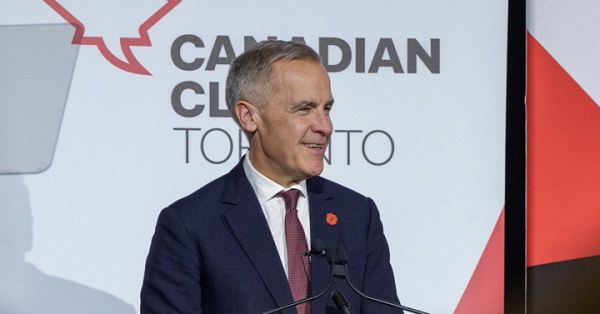
If you only listened to the mainstream media, you would think Justin Trudeau’s carbon tax is long gone. But the Liberal government’s latest budget actually doubled down on the industrial carbon tax.
While the consumer carbon tax may be paused, the industrial carbon tax punishes industry for “emitting” pollution. It’s only a matter of time before companies either pass the cost of the carbon tax to consumers or move to a country without a carbon tax.
Dan McTeague explains how Prime Minister Carney is doubling down on net zero scams.
-

 Crime22 hours ago
Crime22 hours agoCBSA Bust Uncovers Mexican Cartel Network in Montreal High-Rise, Moving Hundreds Across Canada-U.S. Border
-

 Environment23 hours ago
Environment23 hours agoThe Myths We’re Told About Climate Change | Michael Shellenberger
-
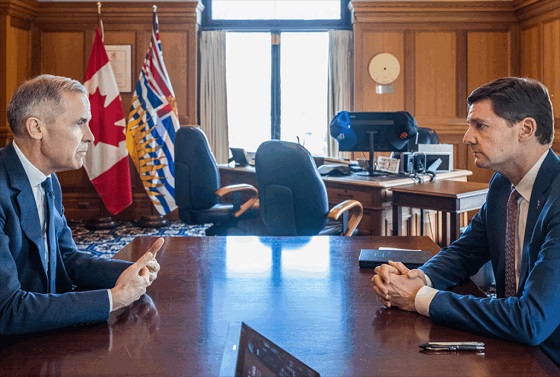
 Energy2 days ago
Energy2 days agoIt should not take a crisis for Canada to develop the resources that make people and communities thrive.
-

 Dr John Campbell1 day ago
Dr John Campbell1 day agoCures for Cancer? A new study shows incredible results from cheap generic drug Fenbendazole
-
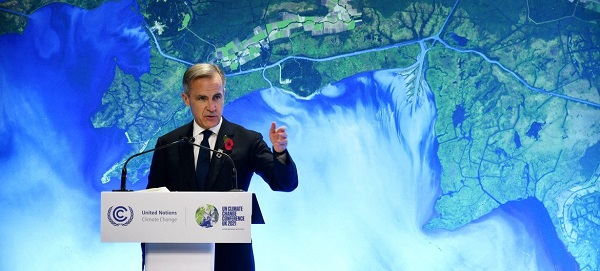
 Alberta2 days ago
Alberta2 days agoFederal budget: It’s not easy being green
-

 Business2 days ago
Business2 days agoWill Paramount turn the tide of legacy media and entertainment?
-

 Artificial Intelligence21 hours ago
Artificial Intelligence21 hours agoAI Faces Energy Problem With Only One Solution, Oil and Gas
-

 Health21 hours ago
Health21 hours agoLack of adequate health care pushing Canadians toward assisted suicide









